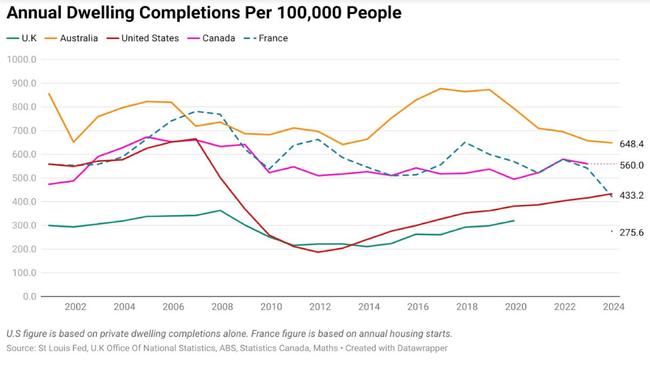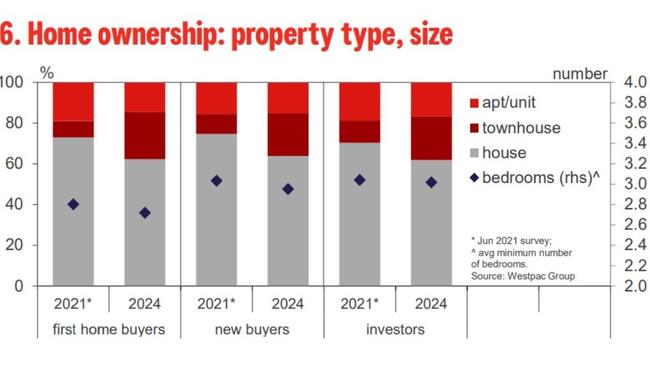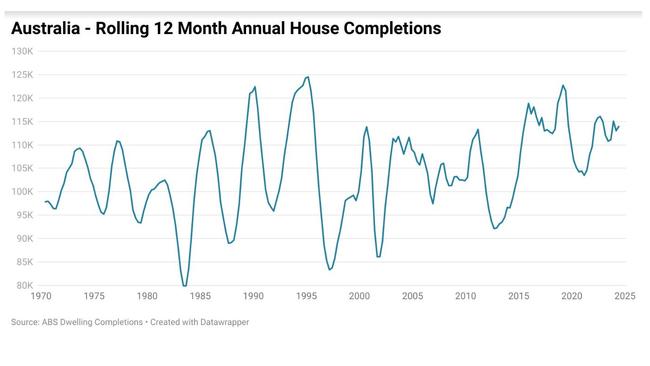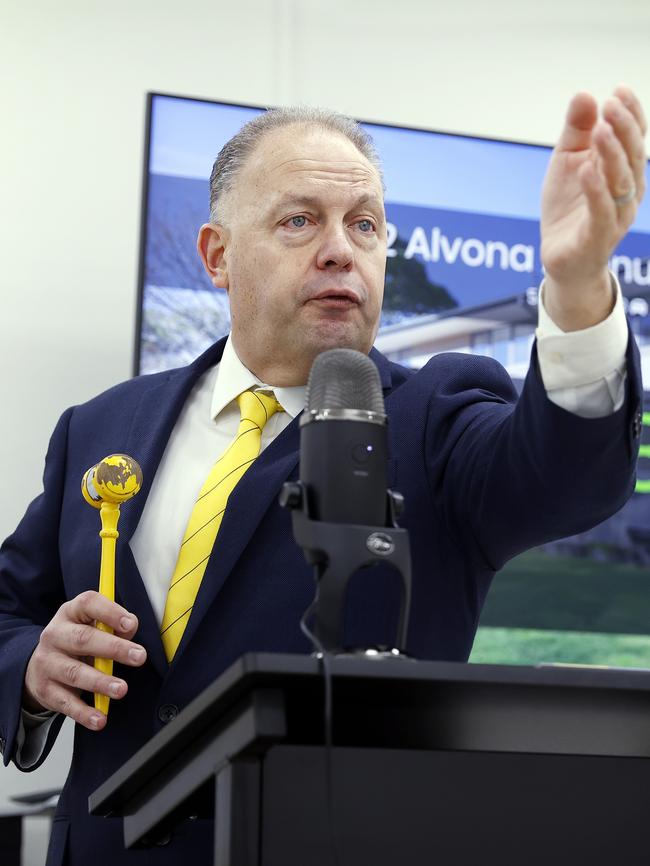‘More to it’: Hidden reason for housing crisis as Aussies turn their backs on apartments
Even in the midst of a full-blown housing crisis, there’s one type of home most of us just won’t buy – even though they’re much more affordable.
In the debate around housing – whether it’s the issue of affordability or of availability – the standard narrative is one defined by supply.
This was echoed in a Senate Estimates Committee hearing in May of last year by then-RBA Governor Philip Lowe.
“The solution to all these problems in the housing market is supply, supply, supply.” Lowe said.
In a vacuum, Lowe is correct – given enough time and enough supply of new housing in the right places, it would address many of the issues the nation faces with housing.
But as anyone who has done Year 9 Business Studies can tell you, there is another vital element to the equation that is often largely overlooked: Demand.
Listening to narrative after narrative on housing supply from state and federal politicians to the Reserve Bank gives one the impression that Australia does not put in a great performance in adding to housing supply in aggregate.
In her recent address to the AFR Property Summit, Federal Housing Minister Clare O’Neil had this to say on the issue.
“At the turn of the century, the median household price was about four times average incomes. Today it is nearly eight times,” she said.
“Why have prices gone up in this way? Because for a long, long time in our country, we have not been building enough homes.

“Put simply, in Australia today, we do not have as much housing per person as countries we would compare ourselves to.
“Australia has among the least housing per person than comparable countries and is far below the OECD average. Less than France, less than the UK, less than Canada.”
Australia not having enough homes is a rather self-evident fact at this point, but when you get into the data, there is a bit more to it.
Australia actually builds more homes per capita than all of the countries O’Neil cites, as well as building significantly more than the United States and the overwhelming majority of the rest of the developed world.

But there is an additional dimension to the housing supply equilibrium – what kind of homes do Australians want to live in?
In an April survey by Westpac, it was found that 84 per cent of prospective home buyers wanted to live in freestanding houses or townhouses, after accounting for what a household had the means to afford.

Yet despite the overwhelming majority of Australians wanting to live in houses, the construction of new houses hasn’t kept up with the growth of the population.
In fact, back in 1995 when the nation’s top-selling car was the Ford EF Falcon and radio stations were rocking out to the number one hit of the day, Seal’s Kiss By A Rose, Australian house construction peaked at 124,500 completions for a rolling 12 month period.

Since then, the size of the nation’s population has risen by 52.4 per cent (9.4 million people) and the number of workers in the construction sector has grown by 125.8 per cent (758,300 additional workers in net terms).
If we cast our gaze back even further to toward the beginning of the ABS data set on house completions, in the year to March 1977, 110,800 houses were built. This is only 3100 fewer houses than have been built in the last 12 months, despite the enormous leap in technology that has occurred over the last five decades.
Apartments v houses
Despite the overwhelming preference of Australians for townhouses and freestanding homes, even in the face of the costs associated with those types of properties, the last 15 years have seen a sizeable expansion in the number of apartments being built.
Between the start of the data series breaking down what type of properties were approved for construction in 1992 and 2009, an average of 15.8 per cent of homes approved for construction were apartments. This is broadly consistent with the proportion of Australians who would choose to live in apartments in Westpac’s survey earlier in the year.
Between 2010 and the present day, the proportion of newly-approved dwellings held by apartments has risen to an average 26.0 per cent of new homes.
The all-time peak on a rolling 12-month basis was in October 2015, when 37.2 per cent of homes approved for construction were apartments.

A complex picture
While the most concise answer to the question, “Does Australia build enough housing supply?” is no, it’s deserving of a qualifier.
In per capita terms, Australia builds significantly more homes than all its Anglosphere rivals, and it’s a challenging task finding a nation that can outbuild Australia over a protracted period.
But while Australia does build a lot of homes in aggregate, a sizeable proportion are not the type of homes that a majority of Australians really want to live in.
Despite an enormous expansion of the size of the construction sector, this hasn’t translated into more houses being built.


There is no easy answer, no silver bullet, that will fully and singularly address the issue of housing supply in Australia.
Part of the equation is assessment of what level of demand is sustainable and how government can better manage demand through population growth levels and other policy settings.
Ultimately, the Great Australian Dream for an overwhelming majority of people remains a freestanding home, and despite the compromises forced on households, there is little evidence that this dream is going to change any time soon.
Tarric Brooker is a freelance journalist and social commentator | @AvidCommentator
Originally published as ‘More to it’: Hidden reason for housing crisis as Aussies turn their backs on apartments





